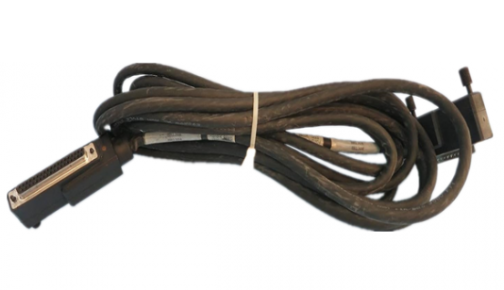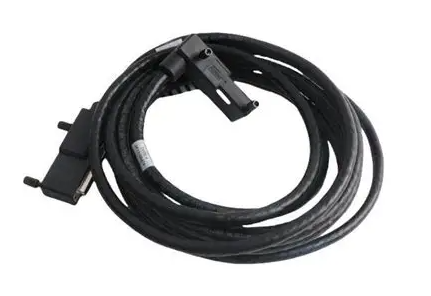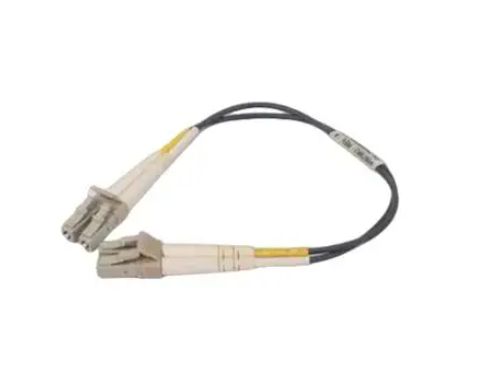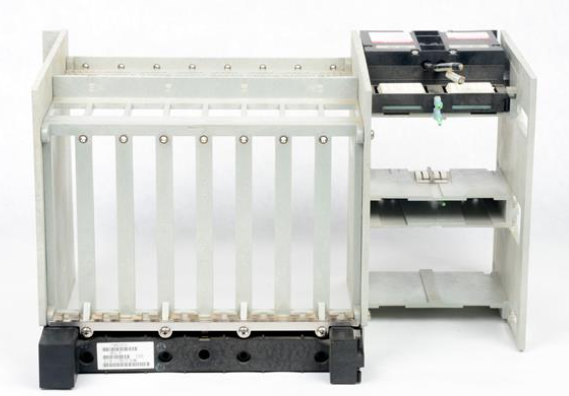Global gas industry trends
(1) The role of natural gas in the energy transition has been further highlighted
In the context of climate change, the low-carbon transformation of the global energy system, coal-based thermal power generation is limited, and in the face of extreme climate impacts, the instability of intermittent energy is fully manifested, at this time, the most realistic choice to increase output and flexible peak regulation is natural gas. Considering the impact of extreme weather and climate events on the energy supply system as the old and new energy systems transition, the role of natural gas in the energy transition will be further highlighted.
In the medium and long term, countries' clean transition to low-carbon or even zero-carbon energy is bound to have a huge impact on the growth of fossil energy demand, including natural gas. However, in the short and medium term, the pressure of emission reduction drives the energy policies of various countries to lean towards the use of clean energy, and the global trend of carbon reduction and emission reduction will provide greater room for the growth of natural gas consumption.
In addition, in the context of climate change, the low-carbon transformation of the global energy system, coal-based thermal power generation is limited, and in the face of extreme climate impacts and epidemic impacts, the instability of intermittent energy is fully manifested, and the imbalance between supply and demand is further aggravated. European countries have been trying and exploring the energy transition for a long time, but through the energy supply shortage and soaring prices represented by natural gas, even the "leader" of the global energy transition, the European region has not been able to cope with the impact of extreme climate change on the energy supply system. It exposes the shortcomings in the stability of the energy system and the emergency support ability, so that in the case of insufficient supply of new energy caused by climate, short-term price fluctuations are induced, and then the transmission and diffusion between different energy varieties and regions, causing global energy prices to rise.

According to the current status quo of technological development, when renewable energy encounters climate change, the most realistic choice to increase output and flexibly peak regulation is natural gas. As the world tries to reduce coal and increase the use of clean energy, countries are increasingly dependent on natural gas. Considering the impact of extreme weather and climate events on the energy supply system as the old and new energy systems transition, the role of natural gas in the energy transition will be further highlighted.
The United Nations Intergovernmental Panel on Climate Change (IPCC) released the Working Group I report of the Sixth Assessment Report, Climate Change 2021: The Physical Science Basis, in August this year. The report believes that climate change will intensify in all regions in the coming decades. As global temperatures rise, the intensity and frequency of extreme heat events are increasing rapidly. Long-term climate uncertainty, especially the high probability of extreme weather, will increase short-term gas demand.
(2) The natural gas industry is developing towards low carbon
In order to achieve large-scale development of natural gas in the future low-carbon world, the most critical thing is to decarbonize. The natural gas market and key industry players are exploring the possibility of reducing carbon emissions using a variety of tools, including CCUS technology, hydrogen and carbon offset mechanisms.
1. CCUS technology is introduced into the whole industry chain
Carbon capture and storage (CCS) technology can achieve effective storage of carbon dioxide without changing the energy structure, which is an important way to deeply reduce carbon dioxide emissions. Carbon capture, utilization and storage (CCUS) is the development of CCS. After purifying the captured carbon dioxide, it is put into a new production process for recycling and reuse, so as to make it a resource. It can not only achieve carbon dioxide emission reduction, but also produce economic benefits, and is more practical. The promotion and application of CCUS technology provides strong support for the low-carbon development of the whole natural gas industry chain. On the one hand, CCUS technology helps oil and gas production operations achieve net zero emissions, oil and gas companies often use old oil and gas fields to implement carbon dioxide storage, through the capture of carbon dioxide to drive oil production. For example, Saudi Aramco uses carbon dioxide captured in natural gas projects for enhanced oil recovery, and Saudi Aramco believes that the circular carbon economy is the best system to ensure continued economic growth while reducing carbon emissions globally. On the other hand, the use of CCUS technology in natural gas power generation and other fields has expanded space for the growth of natural gas consumption. In its October 2020 report, "The Role of CCUS in low-carbon power generation Systems," the IEA pointed out that CCUS technology can provide effective support for natural gas power plants to play a more important role in the future power system.
Negative emission reduction technologies such as CCUS are highly valued by the oil and gas Industry Climate Initiative (OGCI), which has identified CCUS as one of its key action directions. Oil and gas companies are actively promoting CCUS business, and large-scale CCUS projects launched by oil and gas majors are becoming important accelerators for market growth. According to the report "Global Status of CCS 2020" released by the Global CCS Institute, there are 28 large-scale CCUS projects in operation worldwide at the end of 2020, and 13 of these large-scale CCUS industrial demonstration projects in operation are concentrated in the natural gas sector. Natural gas processing project.
It is important to note that despite years of development, CCUS technology has been accepted and used worldwide, but the potential, implementation difficulty and socio-economic benefits of different methods of capture and storage vary greatly. At the current carbon price, the implementation of CCUS technology is not economically feasible, and it is difficult to promote industrialization. In the gas industry's solution to a zero-carbon world, the specific path that is more promising will also depend on the maturity of the technology, business model and economics.

2. Utilize the advantages of industrial resources to develop hydrogen energy
Currently, 70% of global hydrogen production comes from natural gas. As the economic scale of hydrogen energy continues to grow and the hydrogen industry is comprehensively upgraded, green hydrogen production through renewable energy power generation will gradually become the mainstream hydrogen production method in the future, but blue hydrogen made from natural gas and combined with carbon capture technology will also maintain a certain market share. The main future development direction of oil and gas companies in the upstream is unconventional oil and gas and deep and deep sea oil and gas exploration and development, once these areas achieve breakthroughs, the most direct impact on hydrogen supply is the reduction of hydrogen production costs. From the judgment of various consulting institutions and oil and gas companies, it is expected that the global natural gas hydrogen production technology is likely to be commercialized around 2030, and the cost will be significantly reduced.
The current low-carbon transformation strategy of natural gas resource countries represented by Saudi Arabia, the United Arab Emirates and Russia is mainly reflected in two aspects. In addition to the introduction of CCUS technology in the whole industrial chain to reduce carbon emission intensity mentioned above, the other direction is to use the advantages of rich natural gas resources to develop hydrogen energy. According to the "Hydrogen energy Industry Development Plan" issued by the Russian Ministry of Energy, Russia will mainly use methane in natural gas to produce hydrogen, because the cost of blue hydrogen is low, only equivalent to a quarter or even a fifth of the cost of producing green hydrogen through renewable energy. Aramco plans to spend $110 billion over the next few years to develop the Jafurah field, which contains about 200 trillion cubic feet of gas and is one of the world's largest gas projects, and has proposed starting production in 2024 and selling 2.2 billion cubic feet per day by 2036. But Saudi Aramco decided to no longer export the gas in the form of LNG for emission reduction purposes, and instead use it to make blue hydrogen. Middle Eastern national oil companies are actively developing related technologies such as blue hydrogen, and ABU Dhabi National Oil ADNOC plans to increase its CCUS capacity by at least five times by 2030, which will lay the foundation for blue hydrogen development in the UAE.
In terms of transportation, more and more investors and management decision-makers in the energy sector have turned their attention to relying on natural gas pipelines to transport hydrogen. At present, natural gas hydrogen-doped transportation technology has been developed to meet this need. Although there are still some problems with this technology, the industry should still consider it as a development priority.
3. Carbon neutral LNG trading through carbon offsets
With the development of carbon offset businesses such as carbon capture and forestry carbon sequestration, innovative trading initiatives such as carbon neutral natural gas have become an important way out for the development of the industry. Carbon neutral LNG means that the carbon emissions generated in the upstream extraction, processing, liquefaction, transportation, regasification and final use of natural gas are fully offset by other forms of carbon reduction, thus achieving net zero emissions throughout the life cycle. For example, Shell signed two carbon neutral LNG ships with CNOOC in June 2020 to offset the full life cycle carbon emission value of the ship's LNG through tree-planting projects supported by Shell in Qinghai and Xinjiang, China. Other carbon-neutral LNG suppliers offer carbon reduction options including investing in and supporting renewable power generation projects and carbon capture projects. Under the international situation of deepening carbon emission management, carbon-neutral LNG and other new market trading varieties have gradually gained attention, and the operation mode of carbon-neutral LNG has been increasingly applied in the field of international energy trade. LNG producers are racing to add the decarbonization label and enhance the attractiveness of natural gas by delivering carbon-neutral LNG.
Since the beginning of this year, the world has completed multi-ship carbon neutral LNG transactions, such as Gazprom to deliver the first ship of carbon neutral LNG to Europe, Japan has purchased carbon neutral LNG for many times, Singapore and India and other countries have reached carbon neutral LNG transactions. Natural Gas Intelligence, a provider of gas market information and data, expects carbon-neutral LNG deliveries to account for less than 1% of total global LNG deliveries this year, but this will not prevent the continued penetration of carbon-neutral LNG in the market. Wood Mackenzie believes that the green process of LNG has only just begun, and the industry's understanding of carbon emissions will gradually deepen. As demand increases in the future, the LNG market may face higher emission reduction requirements, and areas such as government legislation, shareholder obligations and project financing may require LNG producers, deliverers and consumers to further reduce carbon emissions.

In the future, with the advancement of carbon neutrality process, carbon neutral LNG trading will become the trend of The Times. Carbon neutral LNG responds to higher carbon emission reduction requirements, but at the same time, carbon neutral LNG has a higher cost than traditional LNG, and the corresponding premium will be distributed to all links of the industrial chain, and buyers and sellers will face many problems such as cost sharing, certification standards, carbon metering, and carbon trading.
(3) Reducing methane emissions into an industry development consensus
Reducing methane emissions is an important part of global greenhouse gas emission reduction and an effective way to slow down the rate of climate warming in the short term. Natural gas produces methane emissions at different stages of the production and operation process. Whether natural gas can really play a supporting role in the energy transition depends, to a certain extent, on the effectiveness of methane emission reduction in the natural gas industry. At present, the issue of methane emissions has attracted global attention, and the methane emission reduction of the natural gas industry is expected to further accelerate.
Whether natural gas can really play a supporting role in the energy transition depends, to a certain extent, on the effectiveness of methane emission reduction in the natural gas industry. Among the greenhouse gases produced by human activities, methane is the second largest greenhouse gas after carbon dioxide, and its global warming potential (GWP) within 20 years and 100 years after emissions is 84 times and 28 times of carbon dioxide, respectively. Reducing methane emissions is an important part of global greenhouse gas emission reduction, and it is also the most direct and effective way to slow down the rate of climate warming in the short term. Studies have shown that rapid, across-the-board reductions in methane emissions from oil and gas, agriculture, and other activities could slow the rate of global warming by 30 percent.
In the oil and gas sector, methane emissions are large, especially in the whole process of natural gas production and operation, from upstream natural gas collection and processing, to midstream natural gas storage and transportation, and then to downstream urban gas and end users, each link will produce methane emissions. In 2020, the global oil and gas industry will emit 72 million tonnes of methane, equivalent to 6 billion tonnes of carbon dioxide equivalent at a 20-year global warming potential. According to the IEA, from a technical feasibility point of view, global methane emissions from the oil and gas sector could be reduced by 75% by 2030. Since the recovery value of methane offsets the cost of preventing leakage, about 50% of methane emissions can be reduced at zero cost. Even if harvesting methane does not pay off, doing nothing could raise public doubts about whether natural gas is really clean, leading some countries in Europe and the United States to introduce policies that restrict its use. Therefore, eliminating the negative impact of methane leakage on natural gas has become one of the main drivers for many oil and gas companies to commit to methane emission reduction.

Exxonmobil, for example, has proposed internal rules to strengthen methane regulation, and in its Energy and Carbon Emissions Summary released in December 2020, it set a goal of reducing methane emission intensity by 40% to 50% by 2025. Total is committed to eliminating all associated gas flaring at its operating facilities by 2030. Chevron plans to reduce methane intensity by 50 percent from 2016 levels by 2028 and achieve no Routine Gas Flaring by 2030. The 2035 carbon Management plan developed by the Russian state oil company proposes that by 2035, the methane emission intensity is less than 0.25%, and the associated gas is zero combustion. In its transformation strategy for 2021-2025, Petrobras plans to reduce upstream methane emissions by 40 percent by 2025.
On September 20, 2021, the chairmen/ceos of member companies of the Oil and Gas Industry Climate Initiative (OGCI) jointly signed the OGCI's updated development Strategy and updated the 2025 upstream carbon intensity and methane intensity targets. As one of the important organizations in the international oil and gas industry to address climate change, OGCI currently has 12 member companies, including petrochina, ExxonMobil, BP, Shell, Saudi Aramco, etc., whose oil and gas production accounts for 30% of global oil and gas production. Under the new targets, the OGCI said it plans to reduce upstream methane emission intensity to well below 0.2 percent by 2025, reduce the carbon intensity of upstream operations to 17 kilograms of carbon dioxide equivalent per barrel of oil equivalent, and end conventional burning by 2030. The "Global Methane Reduction Commitment" launched at the 26th Meeting of the Conference of the Parties to the United Nations Framework Convention on Climate Change (COP26), which just concluded in November, also proposes to reduce global methane emissions by at least 30% by 2030 compared to 2020 levels. With more and more international attention on methane emission reduction, the gas industry is expected to further accelerate methane emission reduction.
- EMERSON
- Honeywell
- CTI
- Rolls-Royce
- General Electric
- Woodward
- Yaskawa
- xYCOM
- Motorola
- Siemens
- Rockwell
- ABB
- B&R
- HIMA
- Construction site
- electricity
- Automobile market
- PLC
- DCS
- Motor drivers
- VSD
- Implications
- cement
- CO2
- CEM
- methane
- Artificial intelligence
- Titanic
- Solar energy
- Hydrogen fuel cell
- Hydrogen and fuel cells
- Hydrogen and oxygen fuel cells
- tyre
- Chemical fiber
- dynamo
- corpuscle
- Pulp and paper
- printing
- fossil
- FANUC
- Food and beverage
- Life science
- Sewage treatment
- Personal care
- electricity
- boats
- infrastructure
- Automobile industry
- metallurgy
- Nuclear power generation
- Geothermal power generation
- Water and wastewater
- Infrastructure construction
- Mine hazard
- steel
- papermaking
- Natural gas industry
- Infrastructure construction
- Power and energy
- Rubber and plastic
- Renewable energy
- pharmacy
- mining
- Plastic industry
- Schneider
- Kongsberg
- NI
- Wind energy
- International petroleum
- International new energy network
- gas
- WATLOW
- ProSoft
- SEW
- wind
- ADVANCED
- Reliance
- YOKOGAWA
- TRICONEX
- FOXBORO
- METSO
- MAN
- Advantest
- ADVANCED
- ALSTOM
- Control Wave
- AB
- AMAT
- STUDER
- KONGSBERG
- MOTOROLA
- DANAHER MOTION
- Bently
- Galil
- EATON
- MOLEX
- Triconex
- DEIF
- B&W
- ZYGO
- Aerotech
- DANFOSS
- KOLLMORGEN
- Beijer
- Endress+Hauser
- MOOG
- KB
- Moxa
- Rexroth
- YAMAHA
- Johnson
- Westinghouse
- WAGO
- TOSHIBA
- TEKTRONIX


Email:wang@kongjiangauto.com



































































































































